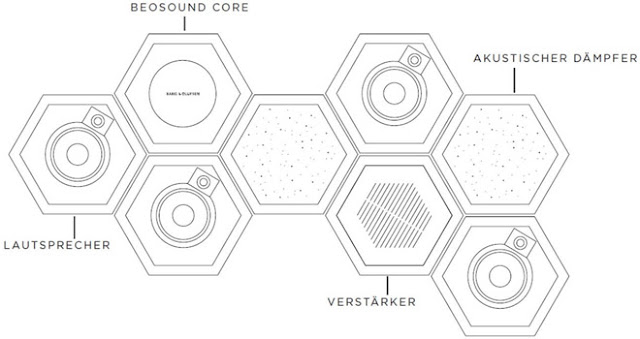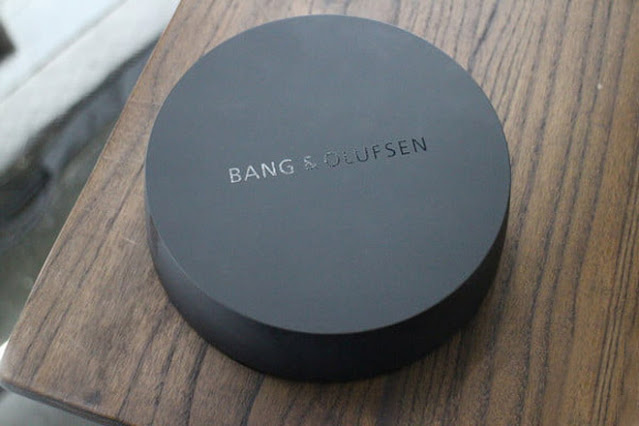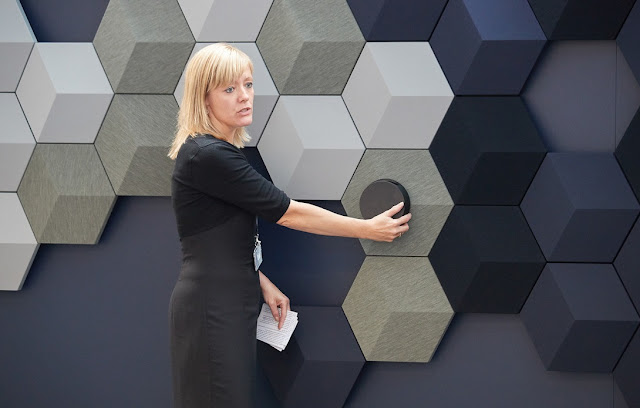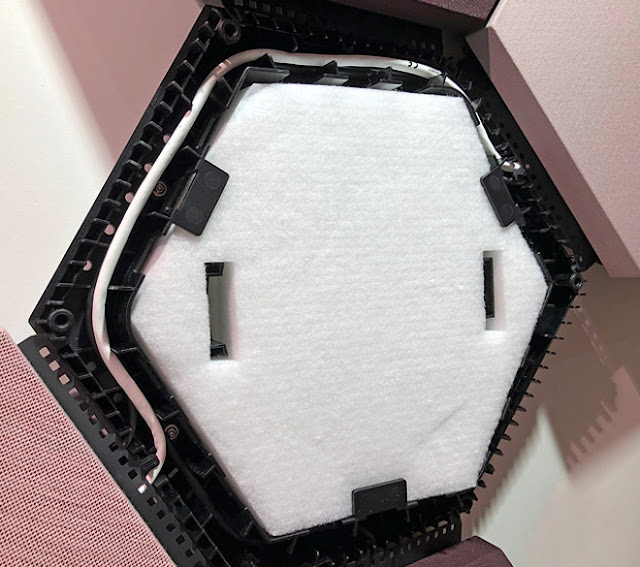BeoSound Shape or how Bang & Olufsen tried to “trick” physics
In 2017, Danish brand Bang & Olufsen presented a speaker system that was hard to miss. Another experiment of the company, famous as a developer of unusual and expensive audio components, is equally interesting from the point of view of electroacoustics, room acoustics, design features, and speaker design. It's about Bang & Olufsen BeoSound Shape.
That year of sales showed that the experimental kit did not become a mass product, but found a niche application as a complete solution for expensive interiors in personal apartments, clubs, and restaurants. The system received a lot of mixed reviews from experts, and the authoritative publication "What Hi-fi?" ranked this multi-room installation among the best speakers of 2017. Under the cut, in detail about BeoSound Shape, about what the ambitious Danes managed to do.
Modularity and design
BeoSound Shape attracted our attention by the fact that it is built on a modular principle, includes several elements, among which, in addition to standard emitters and amplifiers, there are modules for acoustic treatment of rooms. B&O engineers took as a basis the concept, in which the sound depends more on the acoustics of the room than on the speaker cabinet, and its characteristics can be changed using certain modules in the system.
Externally, B&O BeoSound Shape is not like any of the existing multi-room systems and rather resembles a work of modern art. Seeing a voluminous wall panel that resembles a honeycomb or an abstract work of a Suprematist artist, hardly anyone would suspect it is a sufficiently functional audio device. The line between design and hardware in BeoSound Shape has been blurred a little less than completely.
The system, as befits a modern multiroom, is wireless. The basic elements are an amplifier, a unit with HF and MF / LF speakers, and a unit with a sound-absorbing damper. All elements are independent, represent the same size hexagonal modules, which are covered with decorative fabric overlays ("tiles"), which hide their functional purpose.
In design, we gravitate towards the neo-modernist trends of the 60s, and this approach seems controversial to us. We cannot say that this is unambiguously bad, rather the opposite, but we believe that the aesthetics of audio equipment should be as universal as possible. The same cannot be said for BeoSound Shape, as it will not fit into any interior. On the other hand, our friends, architects, and interior designers were delighted with this concept and called it the best that an audio manufacturer has created so far.
In fairness, it can be noted that the system fits into suitable interiors very organically and is perceived as part of the decor. Moreover, the manufacturer offers a wide enough palette and textured assortment of fabric "tiles" covering the modules, which allows them to be flexible enough to adapt to the room. But this trick does not always work, which limits the use of the system.
Source and its capabilities
The core of the system is the BeoSound Core, which is used for wireless switching and audio streaming. It connects to the optical and USB inputs of the Shape amplifier.
With this module, music can be streamed using Wi-Fi, Bluetooth, Apple AirPlay, DLNA, Google Chromecast, Spotify Connect, and Deezer. BeoSound Core supports the following audio formats MP3, WMA (except WMA lossless), AAC, ALAC, FLAC, WAV, AIFF, and supports higher up to 24 bit / 192 kHz. Naturally, it is also equipped with B&O's own BeoLink system, which allows other B&O products with BeoLink to be integrated into a single multi-room system.
The concept of building up modules and a little healthy skepticism
The compact size of the emitting modules immediately suggests that B&O has decided to cheat physics and strive to get a decent sound from a small speaker. As it turned out after listening, this is partly true. The volume of the acoustic modules is incommensurate with the traditional acoustic design, which affects the sound pressure and frequency response.
At the same time, the situation can be viewed from the other side. The sound pressure problem can be easily solved by adding additional radiator modules and amplifiers to the system, which can be easily connected to the already installed system. The only downside, in this case, is the growing cost of the kit. Although, it is likely that, according to the B&O marketers, it will hardly be of concern to the target consumer who is able to pay 3600 Euro for a basic set of acoustics.
Thus, the most important is the acoustics of the room, which must be corrected by sound absorption of dampers, and the sound pressure must be increased by the number of radiators. Naturally, for most rooms that have not been acoustically prepared properly, you will need a lot of dampers, especially in the places of the first reflections, and a lot of emitters for good loudness. Fabric panels will provide some sound dissipation. All this will require the purchase of a large number of panels (about 20 were used for demonstration at exhibitions, and they sounded cool).
Let's make a bold assumption that this is how B&O motivates future users to buy something more substantial than the basic set for 4000 Euro. To put it very roughly, in order for BeoSound Shape to sound really good, the room where they are located needs to be turned into a kind of damped studio with perfect acoustics, and a third of the wall area will radiate sound. In other words, it is the room that will be the main body of the speaker, working inward. And this is probably very cool, but fabulously expensive.
The maximum configuration that the system can support is 11 amplifier modules. Each of them is equipped with eight amplifiers, designed for 4 radiating modules (i.e. 2 stereo pairs), which allows you to connect 44 panels with speakers. Considering that the RMS of each amplifier in the module is 80 W, the total power of such a sound wall of the system will be 3.5 kW. This is more than enough to give voice to a small club.
The LF Question and the Problem of Significant Characteristics
Anticipating the questions of some readers, I will write about the weakest point of this system. With the bass, everything is as good as it can be with a system where the mid/bass driver has a diameter of 13 cm, and the volume of the case does not exceed 3.5 liters. So the bass is pretty mediocre, although surprisingly good low mids.
The situation can be remedied by a subwoofer, and in the B&O lines, there is even a suitably designed, pentagonal BeoLab 19. With it, everything will be almost perfect, but this is money again
World loudspeaker legends: controversial BeoSound Shape or how Bang & Olufsen tried to “trick” physics
An alternative way to enhance the bass can only be the correction of the room acoustics, but for this, it will need to be turned into a kind of resonator. This decision seems to me even less rational than buying a subwoofer. In this sense, physics was not very well received, but there was a good reason to sell a good powerful subwoofer to the target consumer.
B&O probably does not publish the exact specifications anywhere regarding the frequency response of the system, sensitivity, and sound pressure, as well as the level of distortion. At least we couldn't find them. This is not a rare situation with modern audio components. In this case, I see 2 main reasons:
a system with a different number of modules, configuration and in different rooms will sound different;
the modest acoustic capabilities of the base kit may scare discerning audiophiles away from modular expansion and judge by the performance of a single element.
Conclude
The system is really original, and the rationality of its technical solutions will cause controversy for a long time. At the same time, it is capable of sounding great (with considerable investments and solving issues with bass). Moreover, it has interesting advantages in terms of room acoustics (damper) and a unique aesthetic component.
Such a speaker is hardly suitable for radical lovers of high fidelity. They will probably prefer options with the same sonic effect, which are 5-10 times cheaper than the basic BeoSound Shape kit. However, it will appeal to discerning aesthetes who are willing to pay really dearly to avoid compromises between sound and aesthetics.








.jpg)








0 Comments